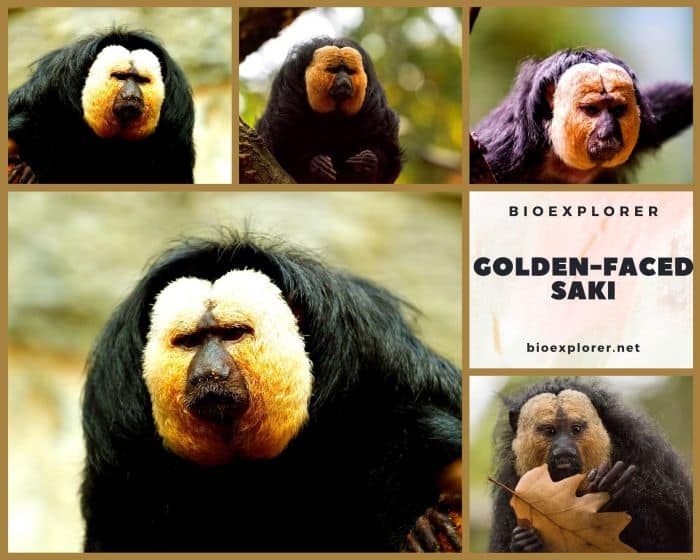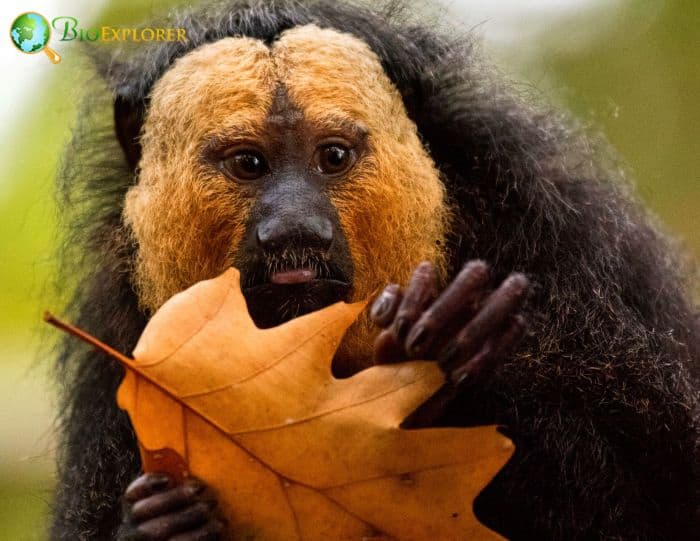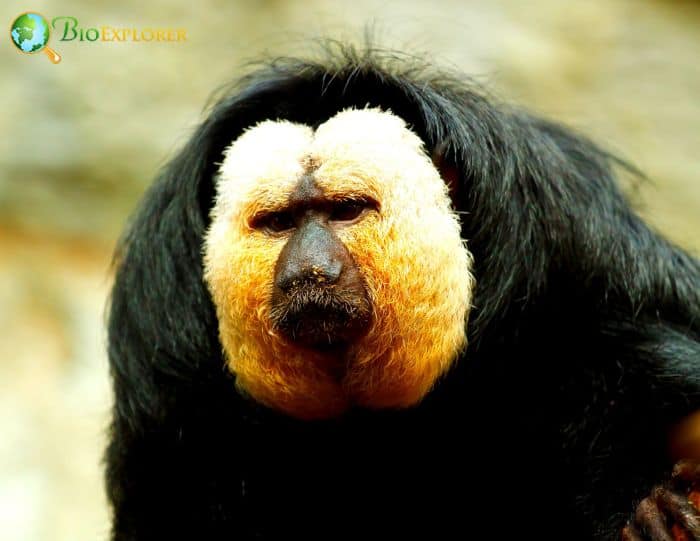
| Animalia | Primates | Pitheciidae | Pithecia | Pithecia chrysocephala |


- Common Name: Golden-faced Saki
- Taxonomy Classification Year: 1850
- Monkey Size: 31.7 to 40.6 cm (12.5 to 16 in)
- Skin Color(s): Black
- Habitat: Rainforest
- Diet: Omnivorous
- Native Countries: Brazil
Golden-faced Saki Distribution
Golden-faced Saki Characteristics

The golden-faced saki[1] (Pithecia chrysocephala) is a New World Monkey found on the northern side of the Amazon on both sides of the Rio Negro in Brazil.
- The species gets its name from the coloration of the male, which has black hair but orange or auburn facial hair.
- The female is lighter in body color and has bald skin on the face, with orange hairlines extending around the snout under the eyes and orange peritoneum.
- The golden-faced saki has a smaller, less spherical, less prognathic cranial vault than the white-faced saki.
Golden-faced Saki Facts

- This species was previously classified as a subspecies of white-faced saki (Pithecia pithecia) but was upgraded to full species status in 2014.
- These sakis live in small groups of 2 to 4 individuals. However, larger groups of 6 or more individuals, possibly including more than one adult breeding female or male, have been reported.
- They have loud vocal calls to establish a territory, typically performed in pairs by monogamous females and males.
- The males rub their chests against the trees. They typically choose trees with edible fruit to excite the females and try to stimulate courtship behavior during the breeding season.
- When a terrestrial predator such as the red-tailed boas is in the vicinity, golden-faced sakis first emit an alarm call. They will then team up and attack the predator, hoping to scare it away.
Suggested Reading: How Many Types of Monkeys Are There In The World?
Cite This Page
APA7MLA8Chicago
BioExplorer.net. (2025, September 17). Golden-faced Saki. Bio Explorer. https://www.bioexplorer.net/animals/mammals/monkeys/golden-faced-saki/.
BioExplorer.net. "Golden-faced Saki" Bio Explorer, 17 September 2025, https://www.bioexplorer.net/animals/mammals/monkeys/golden-faced-saki/.
BioExplorer.net. "Golden-faced Saki" Bio Explorer, September 17 2025. https://www.bioexplorer.net/animals/mammals/monkeys/golden-faced-saki/.











